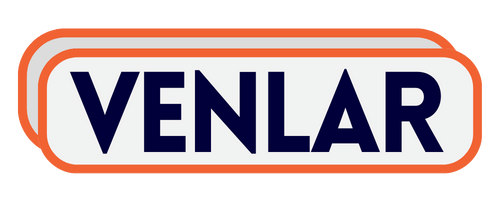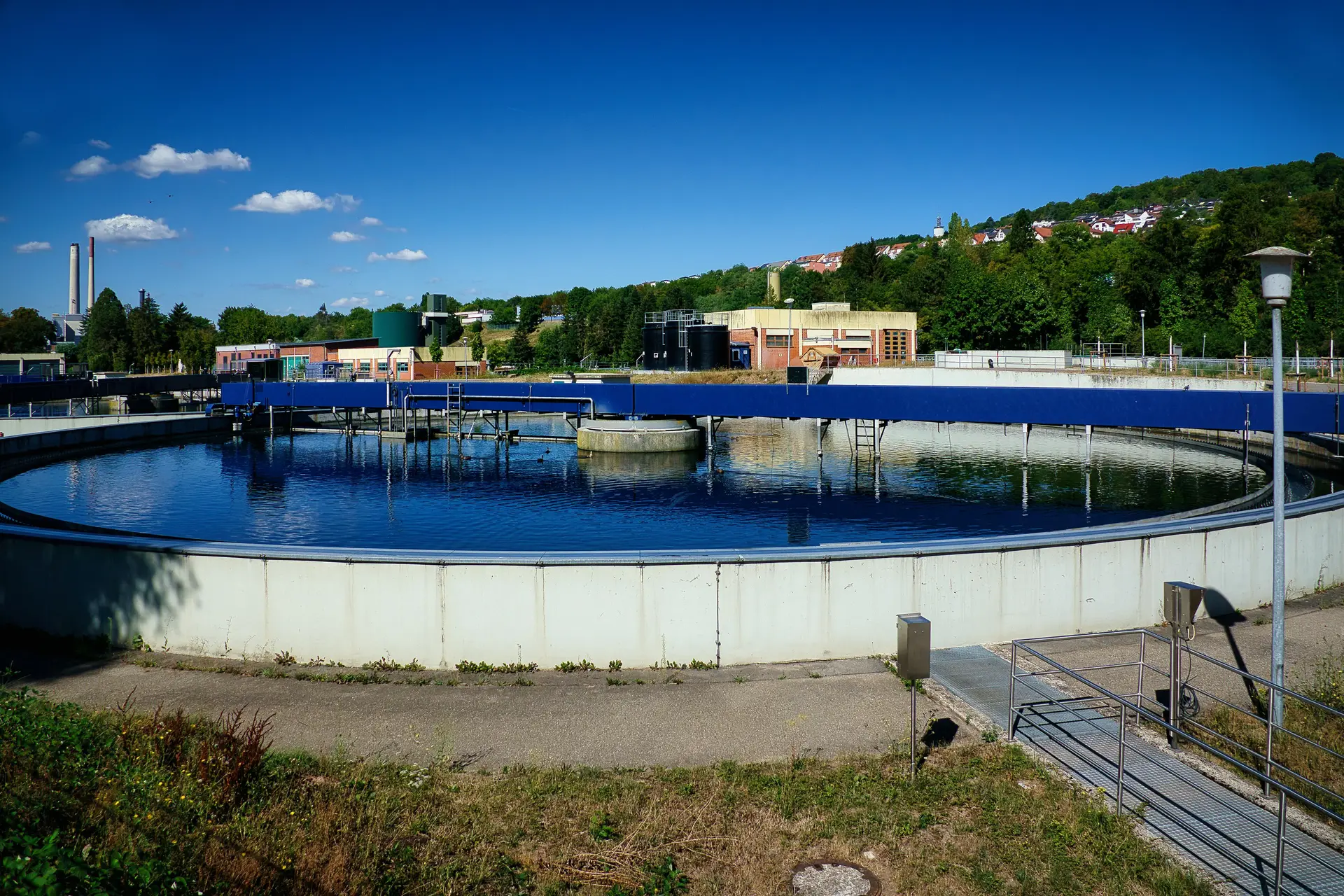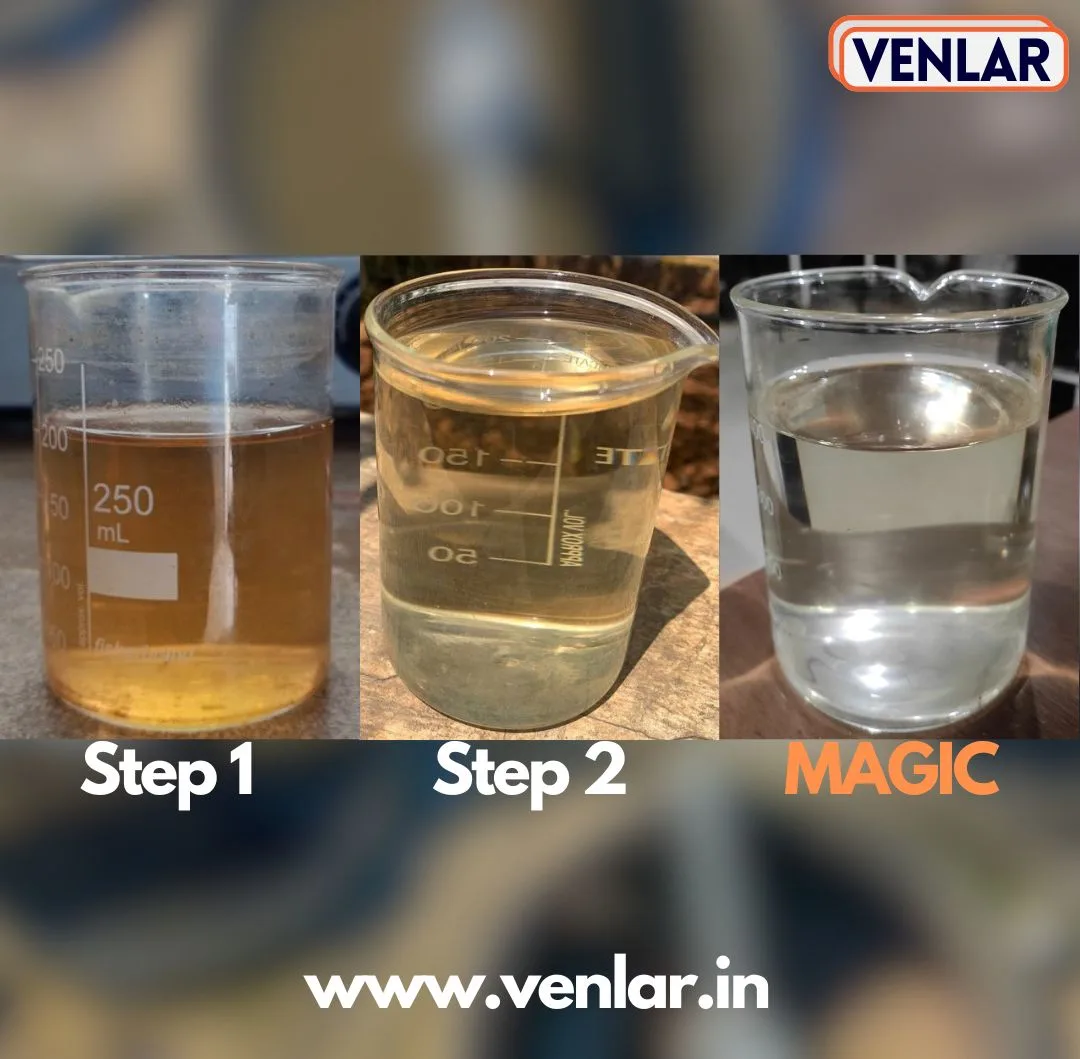Introduction
Efficient wastewater treatment isn’t just about meeting discharge standards—it’s about ensuring the water we return to the environment is clean, clear, and safe. However, many facilities face a persistent challenge: yellowish effluent. This discoloration isn’t merely an aesthetic flaw; it hints at underlying treatment issues that can compromise both environmental sustainability and public health. In this article, we explore the causes behind the yellowness in treated wastewater, examine the limitations of conventional methods, and reveal how advanced solutions like SUPER 24 and OXYSUPER can transform your treatment process.
Causes of Yellowness
Wastewater that appears yellowish can be a sign of incomplete treatment. There are several reasons why this happens:
Undigested BOD/COD
When the biological digestion process is inefficient, not all the organic matter is broken down. This undigested organic load, measured as Biochemical Oxygen Demand (BOD) or Chemical Oxygen Demand (COD), remains in the water and contributes to discoloration.
Humic Substances
Humic substances are dark brown or yellow compounds produced as natural organic matter decomposes. Their interaction with water intensifies the yellowish tint, signaling that the treatment process isn’t fully addressing the organic load.
Dissolved Nutrients and Metals
Elements like iron (Fe) and manganese (Mn) are naturally present in wastewater. When these ions are dissolved in the water, they can react with organic compounds, further intensifying the discoloration.
Consequences on Water Quality
The presence of these pollutants not only affects the appearance of the water but also indicates potential risks to aquatic ecosystems and public health. Yellowing is a red flag for operators—it means that the treatment process is not as effective as it should be, leading to contaminants being discharged into natural water bodies.
Shortcomings of Conventional Solutions
Limitations of Market-Based EM Cultures and Cow Dung
Traditional methods, such as using cow dung or EM cultures, have been employed for years to aid in wastewater treatment. However, these approaches often fall short. They lack the robustness to fully degrade undigested organic matter, and their microbial quality can be inconsistent, leading to variable results in reducing water coloration.
Challenges with Membrane Filtration
Membrane filtration systems are popular for their ability to remove particulates. Yet, these systems require extensive pre-treatment to reduce the BOD and COD levels, and they struggle to address the root causes of yellowing when dissolved organic compounds are involved.
Drawbacks of Chlorine Bleaching and Activated Carbon Filtration
Chlorine bleaching might offer a temporary fix by altering the water’s appearance, but it doesn’t tackle the underlying issues and may lead to harmful by-products. Similarly, activated carbon filtration can be effective but is only as good as the biological pre-treatment it receives. Without addressing the organic load first, these systems fail to provide a long-term solution.
Advanced Solutions: A New Paradigm
The Need for Innovation in Wastewater Treatment
The persistent yellowness in treated wastewater is a clear indicator that traditional methods are no longer sufficient. What’s needed is an innovative approach that not only masks the symptoms but addresses the root causes of the problem.
Synergistic Approach: Bio-Culture and Oxygenation
Advanced solutions leverage a combination of bio-culture and enhanced oxygenation to improve the overall treatment process. By boosting microbial efficiency and ensuring a steady supply of oxygen, these systems effectively break down organic contaminants, resulting in clearer, more compliant effluent.
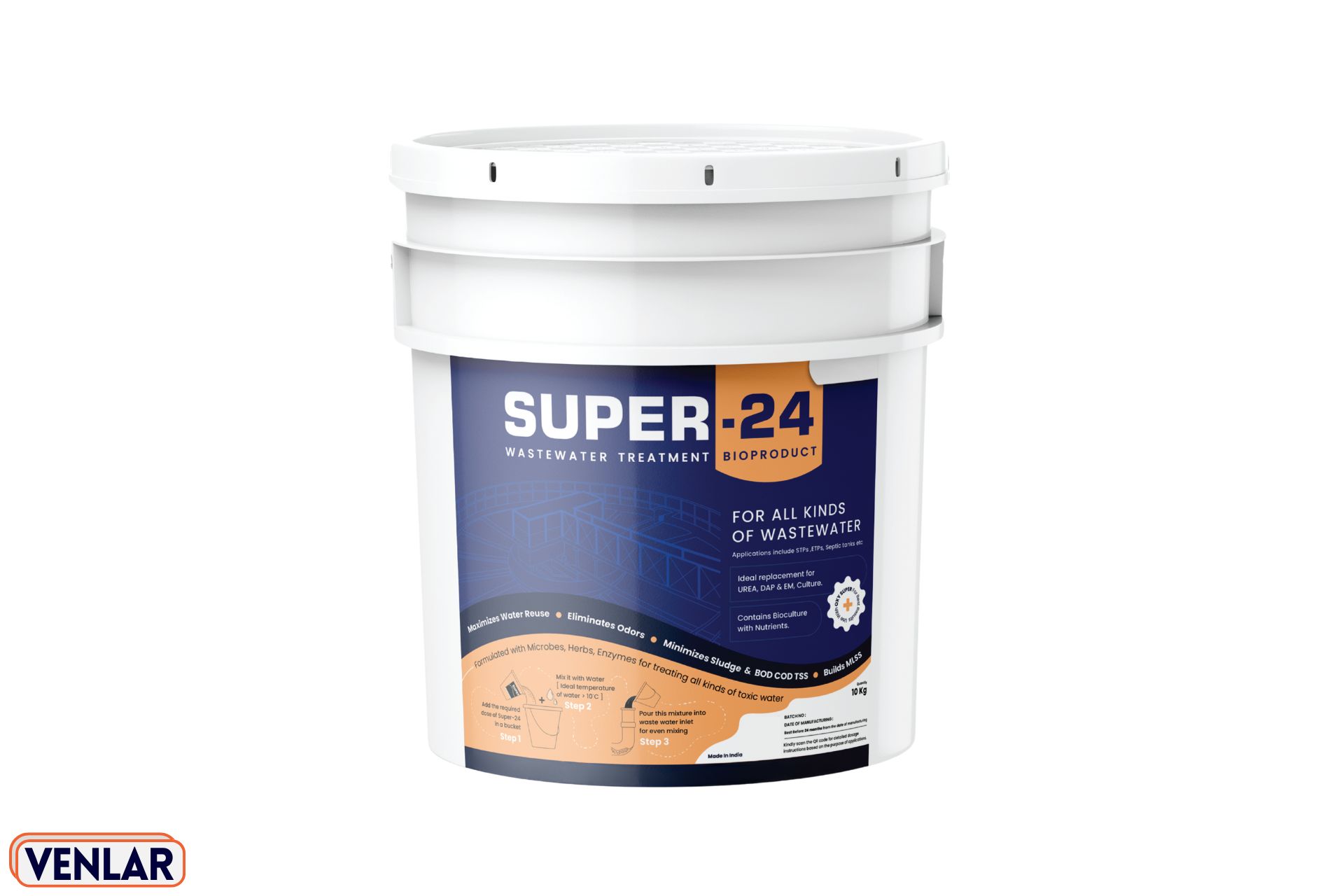
SUPER 24: The Advanced Bio-Culture
Composition and Working Mechanism
SUPER 24 is a cutting-edge bio-culture developed to enhance the breakdown of organic pollutants in wastewater. This advanced powder is rich in fast-acting enzymes, beneficial microbes, and essential nutrients that promote rapid microbial growth. The product is designed to generate well-settling biomass in the treatment tanks, which is critical for reducing undigested BOD, COD, and TSS levels.
Boosting Microbial Growth and Degrading Organic Matter
By introducing SUPER 24 into your wastewater system, you provide a robust microbial boost. This enhanced microbial population efficiently digests organic matter, tackling both the easily degradable compounds and those stubborn humic substances that contribute to yellowness. The result is a significant reduction in the organic load, leading to improved water clarity.
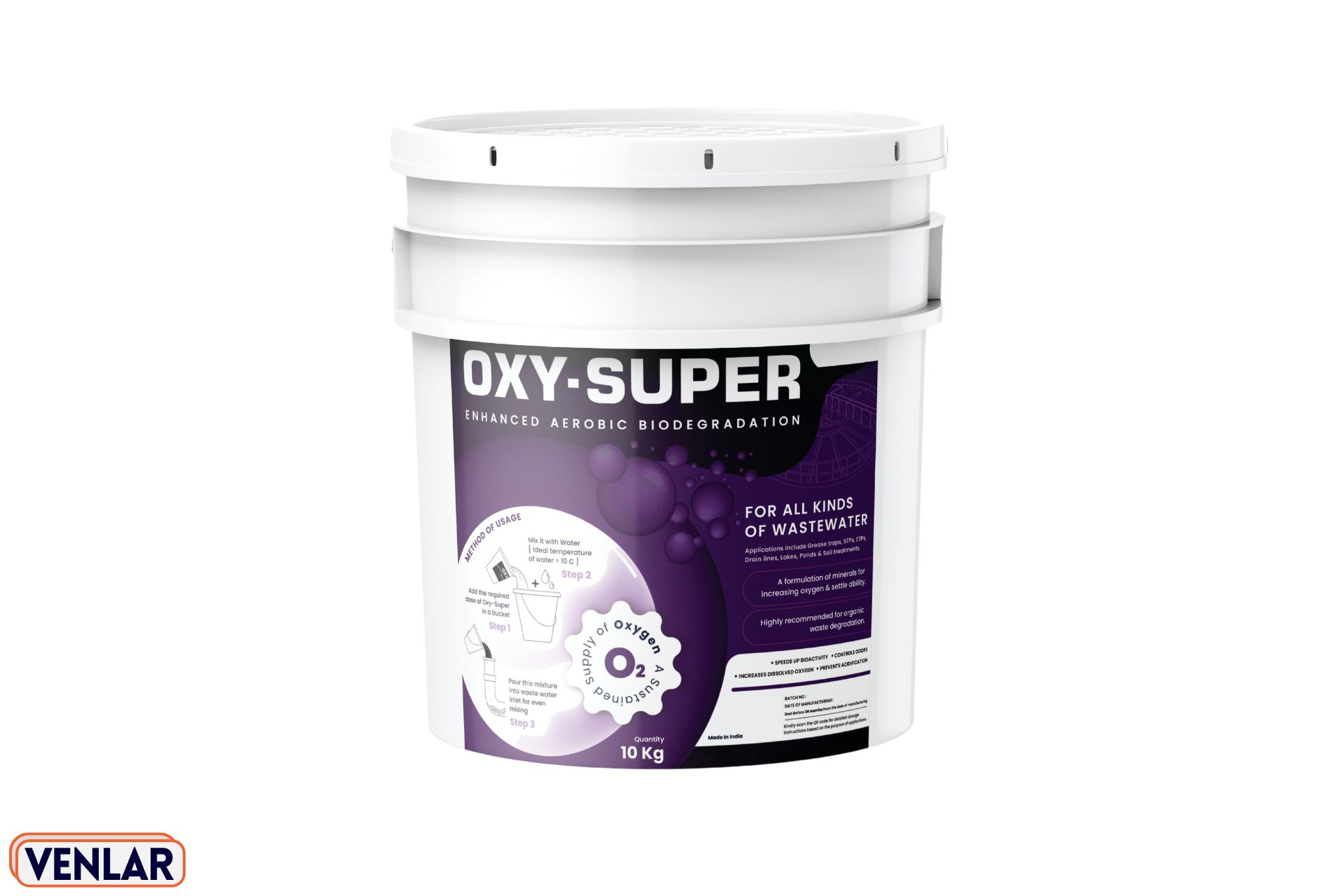
OXYSUPER: The Oxygenation Game-Changer
Nano Granulated Oxygen Liberating Compound Explained
OXYSUPER is a breakthrough in wastewater treatment technology. It is a nano granulated oxygen liberating compound designed to release significantly higher levels of oxygen than conventional aeration systems. This compound ensures that even in challenging conditions, the dissolved oxygen (DO) levels in the treatment tanks remain optimal.
Maintaining Optimal Dissolved Oxygen Levels
For microbial cultures to thrive, they need a constant supply of oxygen. OXYSUPER maintains DO levels above 2 mg/L, a critical threshold for effective aerobic digestion. This consistent oxygen supply allows the enhanced microbial population, boosted by SUPER 24, to function at its peak, efficiently breaking down the organic pollutants that cause discoloration.
Enhancing Microbial Efficiency and Process Performance
With OXYSUPER in place, the overall treatment process is optimized. The product not only supports the survival and growth of beneficial microbes but also accelerates the degradation process, reducing residual BOD and minimizing the occurrence of yellowish effluent. This dual approach—combining enhanced bio-culture with optimal oxygenation—ensures that your wastewater treatment plant operates at maximum efficiency.
Redesigning for Optimal Plant Performance
Importance of Proper Aeration Tank Depth
One of the often-overlooked factors in wastewater treatment is the design of the aeration tanks. Tanks that are too shallow (below 4 meters) may not effectively diffuse oxygen, hampering the performance of the microbial cultures. A well-designed tank ensures that oxygen is evenly distributed, facilitating the efficient breakdown of organic matter.
Balancing BOD/COD Ratios
A poor BOD/COD ratio, such as 1:8, indicates that the organic load is hard to digest. Optimising this ratio through improved treatment processes and effective pre-treatment can significantly enhance the overall performance of the plant. Advanced solutions like SUPER 24 and OXYSUPER help in achieving this balance by accelerating the digestion process.
Integrating Advanced Solutions in Existing STPs/ETPs
Retrofitting existing Effluent Treatment Plants (ETPs) and Sewage Treatment Plants (STPs) with advanced technologies can be challenging but is highly rewarding. The modular design of products like SUPER 24 and OXYSUPER allows them to be seamlessly integrated into existing systems, reducing downtime and capital expenditure while delivering superior results.
Real-World Success Stories and Case Studies
Municipal Applications
Across various states including Maharashtra, Gujarat, and Tamil Nadu, municipalities have implemented these advanced solutions with remarkable success. Facilities that once struggled with persistent yellowness in their effluent now report significantly improved water clarity and compliance with environmental standards.
Industrial Case Examples
Industries, particularly those with high organic loads, have found these solutions indispensable. For example, a luxury hotel’s STP, which previously produced yellowish effluent, achieved crystal clear water after integrating SUPER 24 and OXYSUPER into their treatment process. This transformation not only improved their water reuse capabilities but also enhanced their overall operational efficiency.
Cost-Effectiveness and Return on Investment (ROI)
Lower Capital Investment and Running Costs
Traditional methods like centrifuges and filter presses often require high capital expenditure and continuous operational costs. In contrast, the Venlar approach with SUPER 24 and OXYSUPER not only cuts down on energy and water consumption but also reduces the need for additional infrastructure like thickening tanks. This results in a lower overall investment and a quicker return on investment.
Benefits of Reduced Sludge Volume and Disposal Costs
Efficient decolourisation and organic degradation lead to lower sludge volume. Reduced sludge means lower transportation and disposal costs—a significant factor for many municipal and industrial facilities.
How to Implement SUPER 24 and OXYSUPER
Steps to Integrate Advanced Solutions
Integrating these advanced products into your existing treatment system is a straightforward process. Start by assessing your current plant performance, then gradually incorporate SUPER 24 to boost microbial activity and follow it up with OXYSUPER to maintain optimal dissolved oxygen levels.
Training and Support from Venlar Team
Venlar Corporation offers comprehensive training and support. Their experienced engineers and technicians are on hand to guide you through the integration process, ensuring that your system operates at peak efficiency from day one.
Operational Best Practices
Adopting a proactive approach to monitoring and maintenance will help you reap the maximum benefits from these advanced solutions. Regular checks and proper documentation ensure that any issues are quickly addressed, keeping your treatment plant running smoothly.
Comparing Traditional vs. Advanced Treatment Methods
Efficiency and Performance Metrics
Traditional methods often provide only temporary relief from wastewater discoloration. In contrast, the advanced system of combining SUPER 24 and OXYSUPER offers a lasting solution by addressing the root causes of yellowness. With improved microbial digestion and optimal oxygen levels, these products deliver superior BOD, COD, and TSS reduction.
Impact on Sludge Quality and Disposal
Better dewatering and degradation translate into drier, more manageable sludge. This not only simplifies disposal but also reduces the costs associated with sludge transport and treatment, making the entire process more cost-effective and environmentally friendly.
Conclusion
In summary, the persistent yellowness in treated wastewater is a challenge that traditional methods simply cannot overcome. By addressing the root causes—undigested BOD/COD, humic substances, and dissolved nutrients—advanced solutions like SUPER 24 and OXYSUPER offer a robust and sustainable approach. These innovative products enhance microbial efficiency, ensure optimal oxygenation, and significantly improve water clarity and overall treatment performance. With reduced maintenance, lower energy consumption, and a cost-effective design, the advanced system not only meets regulatory standards but also contributes to a cleaner, healthier environment. It’s time to embrace the future of wastewater treatment and say goodbye to effluent discoloration.
Frequently Asked Questions (FAQs)
They work synergistically—SUPER 24 boosts microbial activity to degrade organic pollutants, while OXYSUPER maintains high dissolved oxygen levels to support these microbes, ensuring efficient breakdown of contaminants.
These products reduces energy, water, and polymer consumption, lowers maintenance requirements, and eliminates the need for additional thickening tanks, resulting in lower capital and operational costs.
Yes, the resilient application allows for easy dosing into existing Effluent Treatment Plants (ETPs) and Sewage Treatment Plants (STPs) with no downtime and no disruption.
Looking for the ultimate solution for your wastewater challenges?
Contact us today at +91 9082892911 or email go@venlar.in to Solve your waste water challenges.
